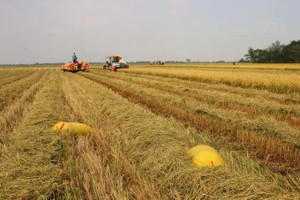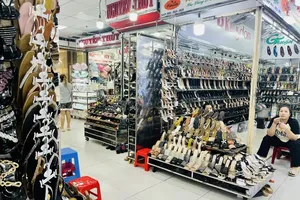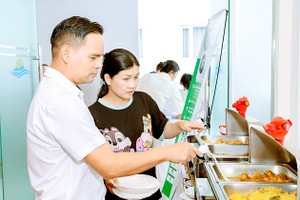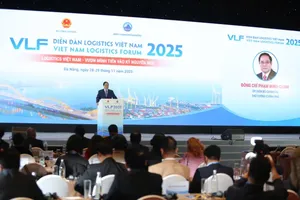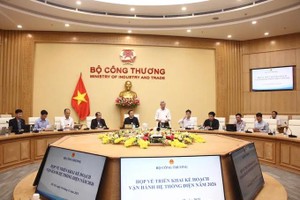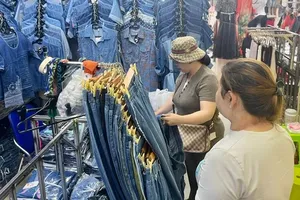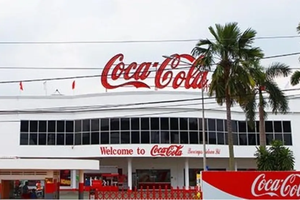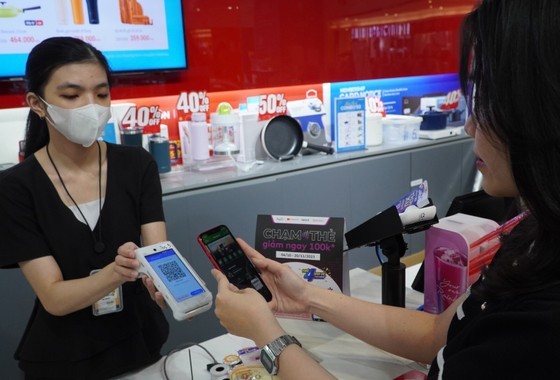 |
A woman scan QR for paying. Payment via QR code has become a popular payment trend |
Within the framework of Ho Chi Minh City's Digital Transformation Week with the theme ‘Digital data mining, successful digital transformation’ on October 17 and 18, a seminar ‘Digital transformation to promote public services and non-cash payments’ was held. Seminar participants believed that data plays an important role in digital payments - an inseparable part of the digital transformation process.
Currently, payment via QR code has become a popular payment trend and the proportion of QR code payments is increasing. According to the National Payment Corporation of Vietnam (NAPAS), in the third quarter, payments via VietQR doubled in number and reached more than 100 million transactions per month.
On the Payoo system, QR code payments increased by 6 percent in quantity and 30 percent in value compared to the previous quarter while payments at counters via QR codes increased by 8 percent in quantity and nearly 20 percent in value.
The proportion of payment value via QR code compared to other forms of payment is about 20 percent for over-the-counter transactions and nearly 40 percent for online transactions. Moreover, this proportion has grown steadily each quarter.
In particular, if previously payment via QR code was only popular in shopping, dining, etc. transactions, now it is also popular in bill payment. Currently, invoice services are also implementing payment via QR codes with the number of QR code transactions increasing 2.6 times compared to the second quarter of last year. One of the important reasons why QR payments lead the trend is that the Government has promoted payment via QR and businesses and users supported this, said a Payoo representative.
Co-founder of MoMo Nguyen Ba Diep said that there are currently about 2.5 million users paying through MoMo for more than 90 percent of public administrative services on the National Public Service Portal and one million users for other public services. Statistically, MoMo is the top 1 payment channel on the National Public Service Portal, accounting for 47 percent of the total transactions on the Portal according to data from the third quarter of 2023.
Ho Chi Minh City is leading in promoting non-cash payments in terms of public services with a rate of up to 45.4 percent for public administration and 39.86 percent for public services.
According to him, about 51.3 percent of customers aged 18-27 have chosen MoMo as the payment method on the National Public Service Portal. Additionally, 45.8 percent of young customers in this age group also use MoMo to pay for public services. The above data shows that young people play an important role in accelerating national digital transformation.
Deputy Governor of the State Bank of Vietnam Pham Tien Dung said that data and the analysis, exploitation and connection of data are the decisive factors in creating the success of the process of promoting non-cash payments and digital transformation in the banking industry.
Deputy Governor Pham Tien Dung emphasized that data not only helps banks authenticate and identify customers, but also through technology applications to analyze and capture consumer behavior and trends; thereby, commercial banks can make decisions on product development and supply. products and services to meet market needs and improve operational efficiency.
Subsequently, the State Bank and other banks and payment intermediaries have been recently implementing the application and connection of population data information in their activities, especially payment and credit to promote the development of non-cash payment and digital transformation in the economy. Commercial banks, financial institutions, and intermediary payment units participated in exhibitions that introduced many new technologies in banking.
It is expected that in the coming time, the State Bank will continue to coordinate with ministries, agencies and people's committees in provinces and cities to implement tasks and solutions in the Non-cash payment development project for the period 2021-2025, the digital transformation plan and the Project 06 with a focus on perfecting the legal framework to promote digital transformation including policies on connection and data exploitation, banking application systems operate safely, expansion of the digital ecosystem to serve payments online with convenient services.
According to the survey results on cashless payment activities of IDG Vietnam, a member of the International Data Group, some 41 percent of transactions have not used cash by mid-May 2023, compared to 28 percent in 2020. In particular, the most popular payment methods are via app/QR Code with 66 percent and payment via POS with 14 percent. The majority of consumers use cashless payments to buy and sell on e-commerce platforms with 87 percent and transfer money with 77 percent.
